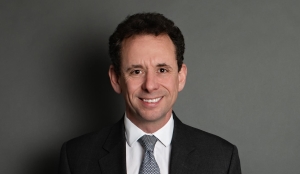Shenzhen court issues written judgment in Huawei v Samsung case
In January this year the Shenzhen Intermediate court held a live broadcast of its announcement of the judgment on two SEPs infringement cases filed by Huawei against Samsung (reported here). We reported the court’s expectation that the written decisions would follow a few days later. That proved to be somewhat over-optimistic: the final decision was issued on 21 March.
The delay was caused by disputes over redactions in the final written judgment. In retrospect that may have been predictable: the same problems arose in the UK's Unwired Planet decision (see here). To be fair to the Shenzhen court, the delay in issuing the final written decision in Unwired Planet whilst the parties agreed confidentiality was significantly longer, at over seven months.
Each of the Shenzhen court's two written judgments is substantial, at more than 350 pages. We summarise the findings below:
FRAND binds the affiliates of the SEP holder and implementer
The question of whether the FRAND commitments bind affiliates in a group of companies is surprisingly topical at present. It was relevant in the Shenzhen case because the Defendants were Samsung China, Samsung Huizhou and Samsung Tianjin. The issue arises because the acts that Huawei complained about were not carried out by these companies. They were carried out by their parent company, Samsung Electronics Co Ltd.
The Shenzhen court found that the parent company and its Chinese affiliates formed a community of shared economic interests. Samsung Electronics gains its economic benefits through the three Chinese affiliates' manufacturing and sales activities in China. The court found that where a parent company acts on behalf of itself and its affiliates to negotiate a licence, the parent company's acts should be deemed as the affiliates' acts. The obligations that arose from the FRAND commitment therefore bound the defendants in this case.
This is an interesting step because although the parties were negotiating a cross licence, in this case Samsung was acting as an implementer. In other words Samsung was a beneficiary of Huawei's licensing commitments to ETSI. But, as in the Huawei v ZTE case in the CJEU, the Chinese court recognised that the obligations flowing from the FRAND commitment are not purely one way from patent owner to implementer: the implementer seeking a licence must take certain steps too. In determining whether to grant an injunction against these Defendants, the court would take into account the acts or omissions of their parent company.
FRANDly negotiations?
The court found the following behaviours were not consistent with Samsung’s FRAND obligations:
-
In their cross- licence negotiations, Samsung insisted upon discussing a licence covering both SEPs and non-SEPs (a practice known as "bundling"). The court found that this caused significant delay to the negotiation process.
The court based this finding on a term sheet sent by Samsung to Huawei in September 2012. In this document, Samsung said that that they would like the licensing scope to include all patents owned by each party, because that would ensure world peace. In October 2012, Huawei requested that the licensing scope was restricted to SEP patents only. In subsequent meetings the parties continued to argue about the licensing scope as to whether it should cover LTE, UMTS, OMA/Wifi, or be broader. Huawei's six offers only covered LTE at first, but later included UMTS. Corresponding claim charts were exchanged but the parties made no substantial progress.
In March 2015, the GC of Huawei emailed Samsung management claiming that Samsung had never provide¬d Huawei with a standalone offer for Samsung's SEP portfolio, and this was forcing Huawei to negotiate SEP and non-SEP licensing in parallel. Samsung replied that it was being reasonable in voluntarily offering to negotiate non-SEPs, but this was never a pre-condition to agreeing a licence in respect of the SEP portfolio. In the mediation meeting, Samsung told the court that the lack of progress in confirming a definite offer to Huawei arose because the parties had not agreed on the licensing scope.
The Shenzhen court found that according to the recognized international practices, parties can negotiate a licence covering SEPs and non-SEPs, but only if both parties agree to discuss on that basis. If one of the parties was only willing to discuss a licence only covering SEPs, the other party should not insist in bundling the licence of SEPs with non-SEPs. It found that Samsung, by its actions, had only offered to discuss a licence to both portfolios.
This is interesting because until this decision the bundling of patents had been an allegation levelled at SEP owners rather than implementers. The Shenzhen court recognises that an implementer may not be negotiating in good faith if he demands a licence to non-SEPS. Although the implementer may simply be seeking patent peace in demanding such a licence, the court recognised that the patent owner has no obligation to license its non-SEPS, and may legitimately want to retain or exclusively license these assets for product differentiation purposes. Allowing an implementer to demand a licence would illegitimately extend the FRAND obligation to assets that it was never intended to cover.
-
The court found that Samsung employed delay tactics in technical discussions – it failed to reply or failed to reply in a timely manner to the claim charts provided by Huawei.
Samsung explained that their technical team could not attend the technical discussions suggested by Huawei because their team was too busy with handling the litigation cases against Apple, Ericsson and IDC. The Shenzhen court found that a multi-national company like Samsung should be capable of conducting technical analysis and licensing negotiations against several patent owners at once.
The court also noted that in the 6-year negotiation process, there had been a year (during Feb 2014 to Jan 2015) that Samsung failed to provide any response to Huawei's requests of continuing the technical discussions. It regarded this as an unacceptable delay by an implementer.
-
The court found that Samsung failed to provide their licensing offers or respond to Huawei's licensing offers in a proactive manner. From 2011 to 2017, Huawei proposed six licensing offers. Samsung only provided one counteroffer after Huawei proposed its fifth offer. Samsung did provide a second offer during the court-organised mediation (see below), but the court considered that the second offer was not substantially different from the first offer.
-
The court found that Samsung rejected Huawei's arbitration proposal without justified reasons. The court referred to the EU Commission's anti-trust investigation against Samsung in 2014. As part of the resolution of that investigation, Samsung committed that it would negotiate on FRAND terms with a potential licensee for a period of a year. If no agreement could be reached during this period, the parties were allowed to opt for submitting the dispute to court or arbitration. The court found that Samsung had thereby accepted the idea of court adjudication or arbitration as an effective way to solve a licensing dispute.
Huawei made three proposals to submit the licensing dispute to arbitration: on 27 May 2013, 21 May 2014, and 28 Oct 2015. In its 28 Oct 2015 proposal Huawei also offered to disclose the terms of the Huawei-IDC licence and Huawei – Apple licence in the arbitration if confidentiality measures were in place.
Samsung argued that it was unacceptable for Huawei to push for arbitration while in parallel Huawei continued to keep their Chinese lawsuits for injunction moving. So on 8 Aug 2016, Huawei provided detailed arbitration terms for resolution of the dispute at the International Center for Dispute Resolution. If Samsung agreed, Huawei would withdraw all of their cases currently seeking injunctions.
Samsung rejected this offer. The court found that this rejection was not consistent with Samsung’s commitment to arbitrate, and was inconsistent with Samsung’s obligations as an implementer.
-
The court found that Samsung failed to provide a substantive solution proposal in the court-organized mediation.
In order to help the parties to reach a licence, the Shenzhen court had organized two mediation meetings. The court requested the parties to provide their licence offers 40 days before the first mediation meeting. Huawei made their offer within the designated period, but Samsung failed to do so. Samsung argued that it was not yet the right time to make an offer. When the court asked for an explanation, Samsung was unable to give one that satisfied the court.
The court then indicated that it would take into account acts in the mediation in assessing the parties' compliance of FRAND. This may seem surprising to UK or US readers but illustrates the rather different approach to mediation that is taken in China. On receiving this warning, Samsung responded to Huawei's offer, but the decision suggests that it had not made any significant move from its previous offer. The court found that Samsung lacked good faith in negotiations.
In contrast, the court found little basis to criticise Huawei's negotiation approach. There was one point that attracted attention: during the licensing negotiation, Huawei initially claimed that it had acquired 189 LTE families from Sharp. Further investigation revealed that only 39 LTE families were in fact acquired. The court considered that this misleading information had a negative impact on the progress of the negotiation. But because Huawei clarified the issue later in the negotiations, the court found that this was not a significant fault.
Calculating a FRAND royalty offer: strength of the portfolios
The Shenzhen court compared three measures of the strength of the parties’ portfolios:
-
The court compared the number of technical proposals accepted by 3GPP. To support this Huawei submitted the Huawei-Ericsson arbitration ruling to show that this was an approach used by those parties in that arbitration proceeding. The court agreed that the number of technical proposals being accepted by international SSOs…




